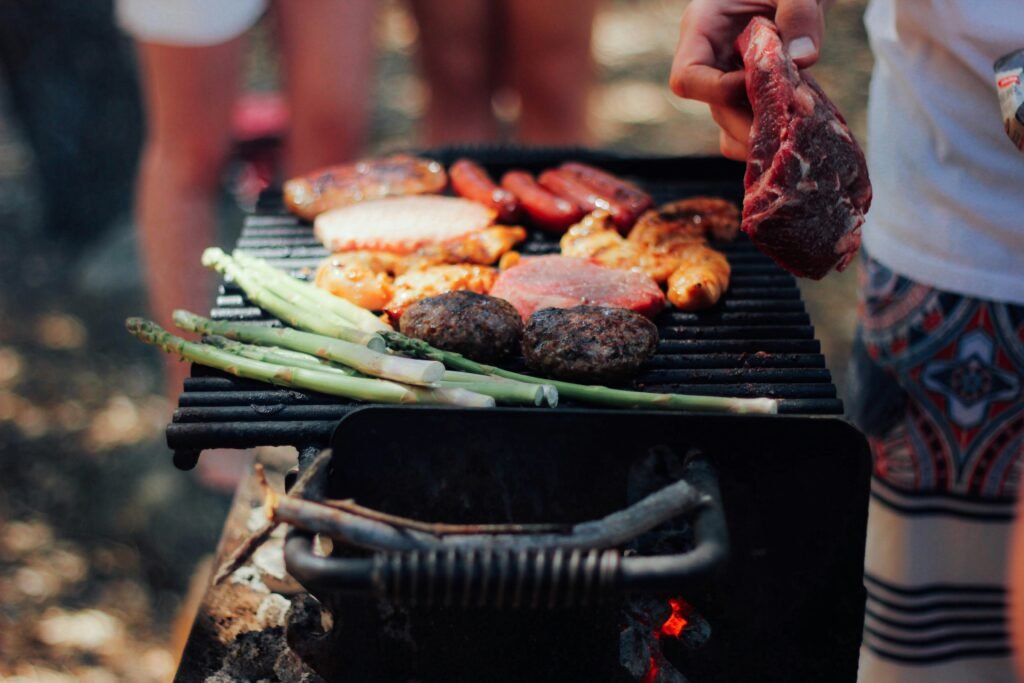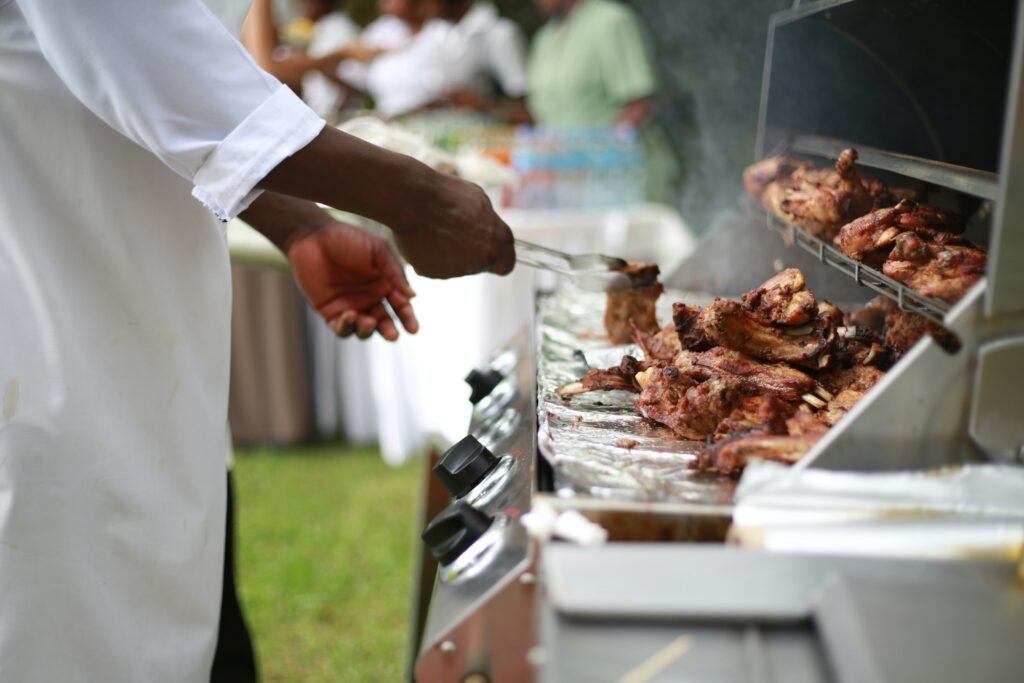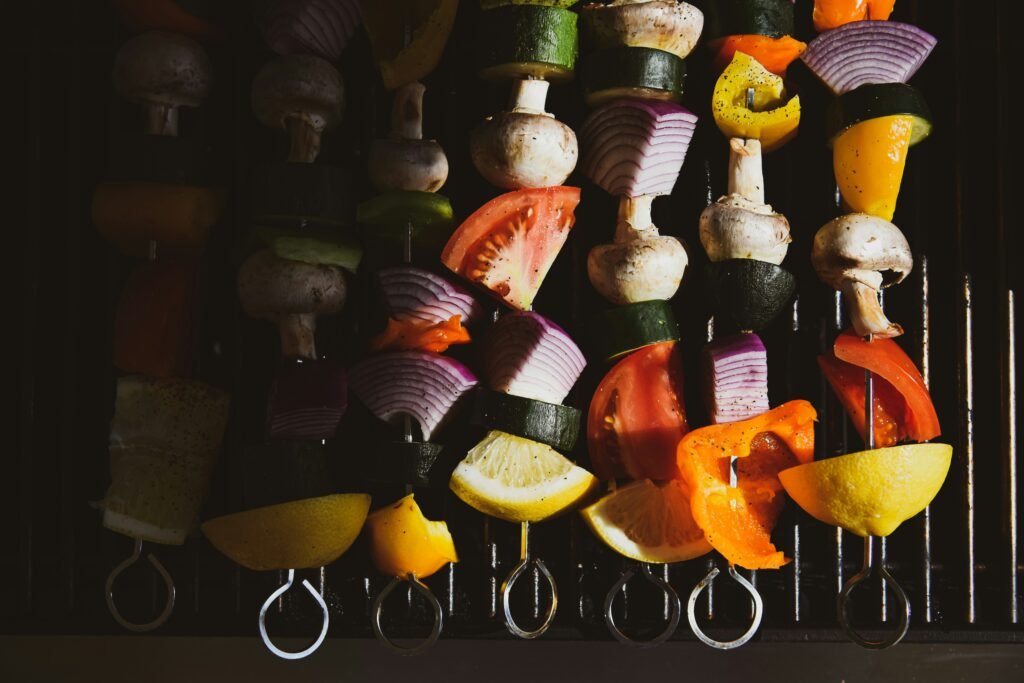When it comes to grilling, there’s more to it than just flipping the meat on the hot grill. One important step that often gets overlooked is allowing the meat to rest after grilling. But is it really necessary? The answer is a resounding yes! Resting your meat allows the juices to redistribute evenly, resulting in a more flavorful and tender bite. In this article, we will explore why it’s crucial to let your meat rest after grilling and how it can elevate your next BBQ experience. So, get ready to savor every delicious bite by mastering the art of resting your grilled meat.

Understanding the Cooking Process
What happens during grilling?
Grilling is a popular cooking method that involves applying dry heat directly to the meat’s surface. When you place meat on a grill, high temperatures cause a chemical reaction known as the Maillard reaction. This reaction creates a delicious brown crust on the meat, enhancing its flavor and adding texture.
The role of heat in cooking meat
Heat is an essential element in the cooking process, especially when it comes to grilling meat. As the meat cooks, the heat breaks down the proteins and collagen present in the muscle fibers. This breakdown process is what makes the meat tender and easier to chew.
How the meat’s structure changes when cooked
When meat is subjected to heat, its proteins undergo a process called denaturation. This process causes the proteins to unwind, leading to changes in the meat’s texture and moisture content. Additionally, the collagen in the meat starts to melt and transform into gelatin, resulting in further tenderization.
What is Meat Resting?
Definition of meat resting
Meat resting refers to the practice of allowing cooked meat to sit undisturbed for a certain period before serving or carving it. During this resting period, the meat continues to cook internally as residual heat spreads through the muscle fibers. Resting is a crucial step as it allows the meat to reach its optimal texture and juiciness.
How is meat resting done?
To properly rest meat, you need to remove it from the grill or oven and place it on a cutting board or platter. Tenting the meat loosely with aluminum foil helps retain heat, while also preventing it from getting too steamed or soggy. The duration of the resting period depends on the size and type of meat being cooked.
Common myths about meat resting
There are several myths surrounding meat resting that need to be debunked. One common misconception is that resting meat makes it less hot for serving. In reality, the meat remains hot during the resting period, but the internal temperature stabilizes, resulting in more evenly cooked meat.
The Science Behind Meat Resting
How juices are redistributed in the meat
During the cooking process, the heat causes the juices in the meat to be distributed towards the center. By allowing the meat to rest, these juices have a chance to redistribute throughout the muscle fibers, resulting in a juicier and more flavorful end result.
The cooling effect: How temperature affects meat texture
When meat is freshly cooked, the temperature is at its highest. If you were to cut into it immediately, the juices would escape, leaving you with drier meat. Allowing the meat to rest enables the temperature to cool down slightly, which helps retain moisture and preserves the desired texture.
Retaining moisture: How resting prevents moisture loss
Resting meat after grilling allows the muscle fibers to relax and reabsorb some of the moisture that has been lost during the cooking process. This reabsorption helps keep the meat juicy and prevents it from drying out when it is finally served.
Benefits of Letting Meat Rest After Grilling
Increasing tenderness of the meat
One of the primary benefits of meat resting is the increased tenderness of the final product. As the meat rests, the proteins and collagen continue to break down, resulting in a more tender and succulent texture.
Enhancing meat flavor
Resting meat after grilling allows the internal juices to redistribute evenly, enhancing the flavor profile of the meat. Each bite becomes more flavorful and enjoyable, as the juices and flavors have had a chance to meld together during the resting period.
Keeping the meat juicy
By allowing the meat to rest, you are ensuring that the juices that have accumulated in the center of the meat have a chance to redistribute throughout the muscle fibers. This redistribution keeps the meat moist and prevents it from becoming dry and tough.
Ensuring even seasoning
Resting the meat also helps ensure that the seasoning you applied before grilling is evenly distributed throughout the meat. As the juices redistribute, so does the seasoning, resulting in a more consistent flavor profile.

Determining the Resting Time
Factors affecting resting time
The ideal resting time for meat depends on several factors such as the size and thickness of the meat, the cooking temperature, and the type of meat being cooked. Generally, larger cuts of meat require longer resting times to allow the internal temperature to equalize properly.
Typical resting times for different types of meats
As a general guideline, smaller cuts of meat, such as steaks, only need to rest for around 5-10 minutes, while larger roasts might require anywhere from 20-30 minutes of resting time. Poultry, on the other hand, should rest for at least 15-20 minutes to ensure optimal tenderness.
How to determine if the meat has rested enough
Determining if the meat has rested enough can be done through touch and temperature. When you gently press the meat with your fingertips, it should feel slightly firm but still spring back. Additionally, you can use a meat thermometer to ensure that the internal temperature has stabilized before carving.
Common Mistakes While Resting Meat
Not resting long enough
One common mistake is not giving the meat enough time to rest. Without a proper resting period, the internal temperature and moisture have not had a chance to stabilize, resulting in less tender and flavorful meat.
Resting too long
While resting meat is crucial, resting it for too long can have detrimental effects. If you let the meat rest for an extended period, it may become cold and lose its desired texture. It is essential to find the balance and rest the meat for an appropriate duration.
Covering the meat while resting
Covering the meat tightly with foil during the resting period can trap heat and moisture, potentially causing the meat to steam and become soggy. Instead, loosely tent the meat to prevent excessive heat loss while still allowing some airflow.
Cutting into the meat during resting period
Cutting into the meat immediately after cooking disrupts the resting process and allows the juices to escape, resulting in drier meat. It is crucial to be patient and wait until the resting period is complete before carving or serving the meat.

Overcoming Challenges in Resting Meat
Managing time for meal preparation
Resting meat may require additional planning and time management, especially if you have a tight schedule. It is essential to factor in the resting time when planning your meals to ensure that you can allow the meat to rest without feeling rushed.
Keeping meat warm during resting period
If you are concerned about the meat cooling down too much during the resting period, you can wrap it in foil and place it in a warm oven (set to the lowest temperature) to help maintain its temperature. Another option is to use an insulated cooler or towel to further insulate and retain heat.
Avoid over-resting the meat
Over-resting meat can result in the loss of desired texture and temperature. To avoid this, make sure to monitor the resting time closely and be mindful of the size and type of meat being cooked.
Tips for Perfect Meat Resting
Best methods to rest meat after grilling
One of the best methods for resting meat after grilling is to remove it from the heat source and transfer it to a clean cutting board or platter. Tent the meat loosely with foil to retain heat without steaming the meat. Another popular method is to use a wire rack to elevate the meat, allowing air to circulate and ensure even cooling.
Useful kitchen tools for meat resting
Investing in a high-quality meat thermometer is essential for determining the meat’s internal temperature and ensuring it has reached the desired level of doneness before resting. Additionally, having a good cutting board and a sharp carving knife will make the resting and carving process much smoother.
Professional chefs’ advice on resting meat
Professional chefs emphasize the importance of resting meat. They recommend resting meat at room temperature for a short period before grilling to ensure more even cooking. They also emphasize the importance of tenting the meat loosely with foil to preserve the moisture and texture.
Do All Types of Meat Need to Rest?
Resting requirements for various types of meat
While resting is generally recommended for most types of meat, the resting requirements may vary depending on the specific cut and cooking method. As a general rule, larger and denser cuts of meat benefit more from resting, while smaller cuts may need less resting time.
Why some meats may not need resting
Some meats, such as thin cuts like steaks or pork chops, may not require extensive resting due to their size and thickness. Since these cuts cook quickly, they do not generate as much internal heat, and hence a shorter resting time is sufficient.
Exceptions to the meat resting rule
Every rule has exceptions, and the meat resting rule is no different. Some people prefer not to rest certain types of meat, such as thinly sliced roast beef for sandwiches, where a longer resting period may result in a texture that is too tender for the desired application.
The Bottom Line: Is Meat Resting Necessary?
Weighing the pros and cons of meat resting
While there are various opinions on the necessity of meat resting, considering the advantages it offers, it is generally recommended to let meat rest after grilling. The benefits of increased tenderness, enhanced flavor, juiciness, and even seasoning make it a worthwhile step in the cooking process.
Determining personal preferences in meat texture and taste
Ultimately, the decision to rest meat after grilling comes down to personal preferences. Some individuals may prefer meat with a firmer texture and are willing to forgo the resting period, while others value the tenderness and juiciness that resting provides.
How meat resting alters the overall grilling experience
Including a resting period as part of your grilling routine can greatly impact the overall dining experience. By allowing the meat to rest, you are ensuring that it reaches its full potential in terms of tenderness, juiciness, and flavor. It adds that extra touch of finesse and elevates your grilling mastery.

